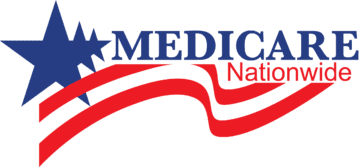
Understanding drug coverage under Medicare plans is crucial for ensuring access to necessary medications. This article provides a straightforward overview of which drugs are covered under Parts A, Part B, and Part D, along with cost-sharing details and exclusions. Whether you’re enrolled in a Medicare Part D, clarity on drug coverage can empower you to make informed healthcare decisions.
Which Drugs Does Part A Cover?
Medicare Part A is a program that helps cover the cost of Hospital Stays, Skilled Nursing Facility Care (SNF), and Hospice Care. If you require medication while in the hospital, Medicare Part A generally covers it. This also includes when you’re staying in a skilled nursing facility or receiving hospice care. If you’re in hospice care, Part A covers drugs that help alleviate pain or other symptoms you might experience.
Which Drugs Does Part B Cover?
Part B of the coverage focuses on drugs administered in medical settings, with exceptions for self-administered drugs. This includes medications administered by healthcare professionals, primarily through infusion or injection. Self-administered injections or those not part of a medical service are generally not covered under Part B, though Part D may provide coverage for such drugs under certain conditions.
Cost Sharing and Deductibles
Usually, if you have Medicare and need these drugs covered by Part B, you’ll have to pay a deductible each year before Medicare helps with the cost.
After meeting the deductible, patients typically pay 0% to 20% of the Medicare-approved amount. Coinsurance may vary based on drug pricing changes. Beginning April 2023, coinsurance may be adjusted based on inflation rates.
Specific Drugs Covered by Part B
- Antigens prepared by a doctor and administered under supervision.
- Blood clotting factors for individuals with hemophilia.
- Durable Medical Equipment (DME) drugs, such as infusion pumps or nebulizers.
- Injectable and infused drugs are administered by licensed medical providers.
- Injectable osteoporosis drugs meet specific coverage criteria.
- Intravenous Immune Globulin (IVIG) for primary immune deficiency disease patients.
- Insulin is used with insulin pumps for certain diabetes patients.
- Oral anti-nausea drugs are used in anti-cancer therapy.
- Oral cancer drugs, if equivalent injectable forms are available.
- Parenteral and enteral nutrition for those unable to absorb nutrition orally.
- Renal dialysis drugs for individuals with End-Stage Renal Disease (ESRD) or acute kidney injury (AKI).
Vaccines Covered by Part B
- COVID-19 vaccine updates targeting specific viral strains.
- Seasonal flu shots and recommendations for individuals aged 65 and older.
- Pneumococcal shots are used to prevent certain types of pneumonia.
- Hepatitis B shots for individuals at high or medium risk.
- Other vaccines are related to injury or illness treatment.
Exclusions and Part D Coverage
Generally, Part B doesn’t cover self-administered drugs in outpatient settings. Part D coverage may apply under specific circumstances, requiring patients to pay out of pocket and seek reimbursement from their plan.
This appointment is meant to alleviate any concerns and there is no-cost or obligation to make a change.
Which Drugs Does Part D Cover?
Part D Drug Coverage Criteria
In essence, for a drug to be covered under Part D, it must fulfill these criteria:
- Prescription Requirement: The drug must be available only through a prescription.
- FDA Approval: It must be approved or licensed by the U.S. Food and Drug Administration.
- U.S. Usage and Sales: The drug should be utilized and marketed within the United States.
- Medically Accepted Indication: It must be used for a medically accepted purpose, as defined by the Social Security Act.
- Not Covered by Part A or Part B: The drug should not be covered under Medicare Part A or Part B for the individual.
Part D Formulary or Approved through Exceptions/Appeals Process
Part D Formulary Exceptions are requests by Medicare beneficiaries to obtain coverage for drugs not in their plan’s formulary or to waive utilization management requirements like step therapy or prior authorization. They are vital for ensuring access to medically necessary medications that may not be on the formulary or require extra steps to access. Without these exceptions, beneficiaries could face barriers to essential medications, potentially harming their health outcomes.
Additionally, the drug should be listed on the plan’s Part D drug list (formulary) or approved through exceptions or appeals.
For more information about the Part D Exception, refer to the Navigating Part D Formulary Exceptions: A Comprehensive Guide.
Coverage of Vaccines
Part D includes coverage for commercially available vaccines, such as the shingles shot. Individuals with Part D do not incur out-of-pocket expenses for vaccines recommended by the CDC’s Advisory Committee on Immunization Practices, such as the shingles shot. However, vaccines covered by Part B, like the flu or pneumococcal shot, are not covered by Part D. For more details on coverage, individuals or providers can contact their Medicare plan.
Exclusions from Part D Coverage
Certain drugs are excluded from Part D coverage by law, including those covered by Part A or Part B. Additionally, these drugs cannot be part of basic Part D coverage:
- Drugs for weight management
- Drugs for sexual or erectile dysfunction, unless approved for other medical conditions
- Drugs for symptomatic relief of coughs and colds
- Drugs for cosmetic purposes or hair growth
- Drugs for fertility promotion
- Prescription vitamins and minerals, except prenatal vitamins and fluoride preparations
- Non-prescription drugs
In Summary
Understanding the drug coverage offered by different Medicare plans is crucial for beneficiaries to ensure they receive appropriate care while managing costs effectively. Part A covers drugs primarily during inpatient stays in hospitals, skilled nursing facilities, and hospice care, focusing on symptom management and pain relief.
Part B covers drugs administered in medical settings, including injections, infusion therapies, and specific medical equipment. Part D, on the other hand, covers prescription drugs obtained through retail pharmacies, following specific criteria and formulary guidelines. It’s important to note that Part D excludes certain drugs and doesn’t cover vaccines covered under Part B.
For more information, check out:
